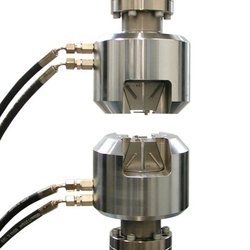One of the biggest obstacles to your personnel success is the perception that you aren’t knowledgeable enough to accomplish your goals. At some time or another we all fear that we lack critical skills or that we don’t have the mental fortitude to compete with our peers. Sometimes it feels like other people have access to extra resources that we do not. This perceived lack of knowledge is a significant obstacle in life and a motivation killer to boot.
When you know nothing about a particular topic, anything can be intimidating. Where do you even start? As it turns out, the vast majority of seemingly difficult problems actually have simple solutions. A few years ago my employer gave me the chance to take on a tough new project: to reverse engineer a $20,000 set of hydraulic wedge grips. The ambitious part of me quickly said yes but I secretly worried that I might not be able to figure it out. I had never done anything like this so I was terrified of taking apart this expensive piece of equipment, let alone attempting to copy it. How was I supposed to know how to design o-ring seal tolerances and select the proper materials? I was fresh out of engineering school!
Are they heavy? ‘…Yeah.’ Then they’re expensive, put em’ back! (joke ref)
I decided to take one thing at a time and start by rolling up my sleeves and disassembling these bad boys. 20 minutes in and I’m covered with hydraulic oil and nervous sweat but I’ve already determined that the internal workings of these grips are actually quite simple and I’m encouraged to keep going.
Later on in the process I’ve moved on to the o-ring design phase and I’m still stumped, so I end up calling a local hydraulics supplier to ask for advice. It turns out that they offered a design guide along with their product catalog specifically for teaching people how to use their products. Designing seals is ridiculously easy when you have a manual that explicitly lists acceptable tolerances and material properties. (Here is a version of that guide) Looking back, most of the work on that project wasn’t actually all that difficult; it was just time consuming and dirty.
And so it has been with the majority of seemingly difficult problems I’ve encountered. Either the solution turns out to be surprisingly simple or the task requires a certain degree of tedious work that is not necessarily difficult. Of course some things genuinely are tough as hell such as designing world-class performance machines, working within unreasonable constraints, or designing a chair strong enough to support your mom. But my theory still holds true otherwise. Much of what engineers do really just boils down to patiently researching a topic and sweating the details, which is actually a pretty encouraging idea to me. What else might I accomplish if I am simply willing to persist on a project?
Indeed, if you can spare a second for some introspection then you might find that your perception of your own limitations has been a significant obstacle between you and your goals. What things haven’t you done because you were afraid to try? I’m here to tell you that once you take the first few steps into a project you will usually find that subsequent steps are easier than you thought they would be. Making even a small amount of progress is encouraging and motivates you to continue working and building positive momentum. The key here is having the guts to get started. You don’t always have to trust in your intelligence to pull you through; grit and energy are more reliable attributes.
I don’t mean to imply that everything is easy or that you can do anything if you try. That would be an act of arrogance worthy of an award of some sort. Rather, I am saying that most things are not nearly as difficult as they first seem and that you might surprise yourself by taking a step outside of your comfort zone.
In any case, I succeeded on the hydraulic wedge grip project in part because I was willing to try something new and in part because that hydraulics supply company made a design resource available to me. Like the supply company, I’m happy to share my knowledge with others. Some of what I have to share with you on EngineerDog.com are just ideas like I’ve discussed here. But I’m also looking forward to sharing some technical resources which I have found to be immensely useful.
For more information about this blog see my about page here.

One trick I’ve learned in reverse engineering is always assume that the other guy was lazy. You can get along way by assuming that angles are 30/45/60, that dimensions are some fractional and hole sizes relate to drill sizes and part sizes to stock sizes. And the standard dimensions of O-rings are used. It’s amazing how quickly you can take a design apart and get something dead nuts on. On the other hand, for $20k, I’m going to guess that there are some little tweaks that can cause real trouble if you don’t watch out.
LikeLiked by 1 person
Good day! I could have sworn I’ve been to this website before but after reading through some of the post I realized it’s new to me.
Anyways, I’m definitely glad I found it and I’ll be
bookmarking and checking back often!
LikeLike
[…] in myself, and in that it was well spent. I gave myself the chance to take on a project that had intimidated me and I learned all this neat stuff because of it. As an engineer, this project hasn’t hurt my […]
LikeLike